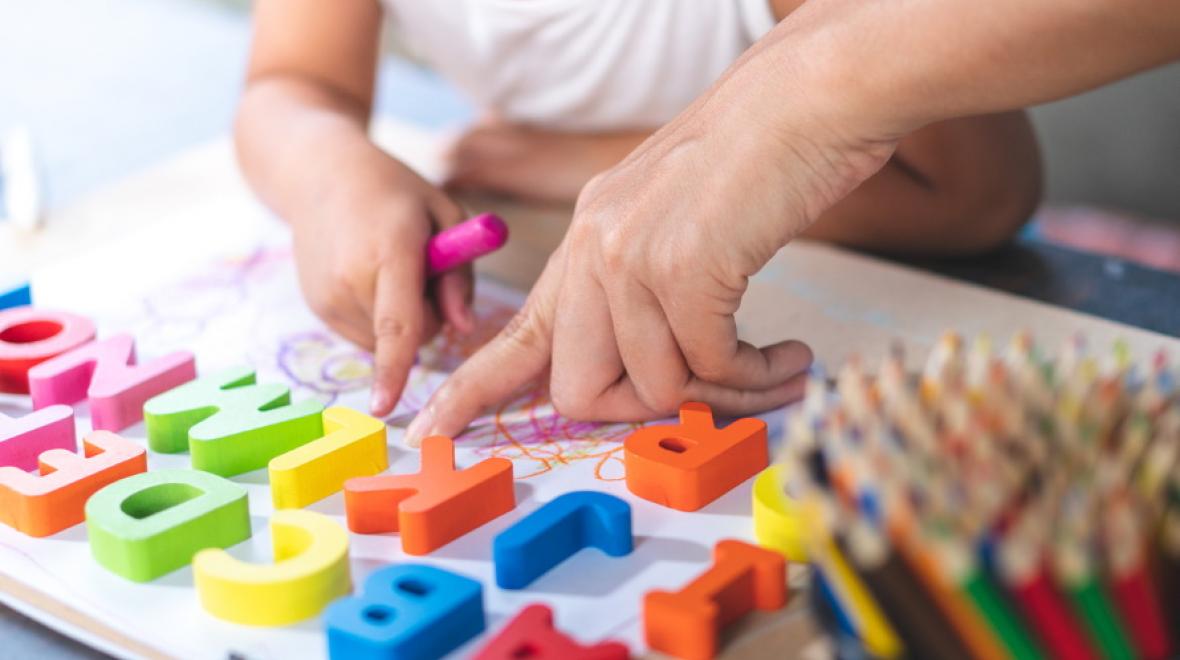
Reading books together, anytime and anywhere, is a powerful way to teach the joys to be found in books and the power of literacy. There are lots of other hands-on ways to build reading skills in young children.
- Make books together using albums of family photos or pictures cut out of magazines. Older kids can dictate the story, you write it down, and then they illustrate the pages.
- Look at family photo albums together, and then tell stories about the people and activities shown.
- Explore letters by drawing, painting, or writing with a stick in the sand or the mud. Make letters with play dough or shape them by using pipe cleaners. Have kids work with puzzles made of letter shapes. Play with alphabet refrigerator magnets. Look for apps for your touch-screen device that let kids practice tracing letters. Draw letters on paper and have your child trace them.
- In addition to letters, talk about symbols in general. You could make a calendar and come up with symbols to remind them of what happens each day, or create a weather or chores chart.
- Act out stories that you have read or stage puppet shows. Tell the story as written, and then imagine what would come next or what other adventure those characters could have.
- Sing songs and play rhyming games. These activities slow language down so it’s easier to understand and remember. Later, try memorizing a story and telling it over and over.
- When your child asks you a question, show how you would look up the answer.
- Visit the library often. Make it a special time in your weekly schedule.
- Participate (virtually and eventually in person) in story times hosted by your branch library or a favorite bookstore. Seeing other kids and parents be excited about books, listening to the storyteller’s voice (kids learn language better when they hear a variety of people speak it) and singing songs together are great ways to spur literacy and language development. Story times are also terrific preparation for school — practicing sitting still and paying attention to an adult other than a child’s own parent is an important developmental skill.
Check out videos of these read-aloud, alphabet-friendly faves on YouTube
- “Chicka Chicka Boom Boom” (book by Bill Martin Jr. and John Archambault) — Kids never tire of the rhythm of this rollicking read-aloud. The letters are the characters in this story: “A told B, and B told C, ‘I’ll meet you at the top of the coconut tree.’”
- “Kipper’s A to Z” (book by Mick Inkpen) — Most ABC books have different, unrelated ideas on each page as they progress through the alphabet. This book has a storyline that runs through it. Kipper the dog and Arnold the pig find an ant and put it in a box, then they find a caterpillar, then the duck, who is too big to fit …
- Dr. Seuss’s ABC: An Amazing Alphabet Book — Sung to “The “Banana Boat Song” melody, this great read-aloud has all the rhythm and fun illustrations you’d expect in a Dr. Seuss book. I also like the fact that on several pages, it goes back to remind you of all the letters in the alphabet that came before the one you’re on.
- “The Little Red Cat Who Ran Away and Learned His ABC’s (the Hard Way)”— This wordless book by Patrick McDonnell engages kids in a storytelling exercise as you read it: “What animal did he see next? Will that animal chase after him, too?”
Some alphabet books are really all about increasing your child’s vocabulary:
- “Eating the Alphabet: Fruits & Vegetables from A to Z” by Lois Ehlert has lots of different fruits and vegetables for every letter.
- “LMNO Peas,” a book series by Keith Baker, uses words for lots of jobs and hobbies, such as dancers, drivers, eaters, electricians, explorers, farmers, friends, etc.
- “A Is for Angry: An Animal and Adjective Alphabet” is a classic by Sandra Boynton that pairs each letter in the alphabet with a favorite animal and an adjective with big personality.
Note that many ABC books are too advanced to be understood by kids just learning the idea that an alphabet exists and that the different shapes of letters have meaning. For example, “Take Away the A” by Michaël Escoffier is a great book for kids who can already read; first- or second-graders will get the jokes, such as “Without the N, the moon says, ‘Moo.’” “Z Is for Moose” by Kelly Bingham is good for kids who already have a lot of familiarity with the conventions of alphabet books. “A Is for Salad” by Mike Lester is a fun and silly selection for kids who know how words are actually spelled — but it would make no sense to kids who don’t.
Some books allow kids to have a tactile experience with the shape of the letters:
“Alphablock” by Christopher Franceschelli includes cutouts of the letters. The sensory book “TouchThinkLearn: ABC” by Xavier Deneux features raised letters and hollowed-out die-cuts, which the children can feel. “If Rocks Could Sing: A Discovered Alphabet” by Leslie McGuirk shows rocks shaped like each of the letters; it could send your little learner on a quest to find rocks that look like shapes, objects or letters.
This article was originally published by Good Days With Kids and republished with permission.











